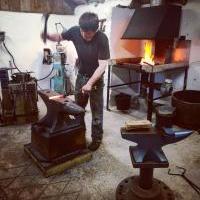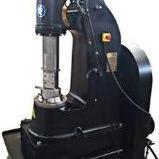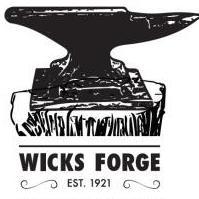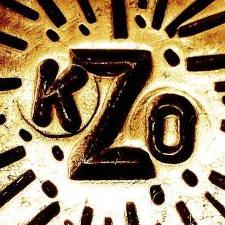-
Posts
211 -
Joined
-
Last visited
Contact Methods
-
Website URL
http://www.anyangusa.net
Profile Information
-
Gender
Male
-
Location
Alvord, Texas
-
Interests
Blacksmithing, fabrication, power hammers
Converted
-
Location
Alvord, texas
-
Biography
Have been a full time blacksmith for over 10 years
-
Interests
Blacksmithing, creating art
-
Occupation
Blacksmith
Recent Profile Visitors
-
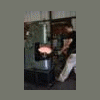
Anyang ST - The real deal?
Jamesrjohnson replied to Jonnytait's topic in Power Hammers, Treadle Hammers, Olivers
Not all hammers made in China are the same... they have different designs and the parts are not interchangeable. Up until 2015 when we totally redesigned the Anyang Forging Press (AFP) hammer, the Chinese hammers were all similar but even then did not have interchangeable parts. We call the Anyang ST the Stolen Technology hammer. They made a fairly close copy but the machining tolerances are not the same (AFP has verified this). The government has shut them down twice. Basically, they have been a trading company and farmed out the machining... and the latest machining that was making parts for the ST company was forced to stop making parts for ST and to apologize to AFP for "stealing" the designs. The people who started ST used to work for AFP, stole the drawings and quit. We believe they have probably found another company to make parts for them... so the process will start all over again. But AFP is the original maker of the power hammer. My father and I have traveled to China at least once a year since 2008 working with AFP and other distributors making improvements to the hammers and working on quality control. AFP has been in business since 1956 and are the largest manufacturer of machines for the forging industry. We will continue to focus on quality and improvements for decades in the future. ST may or may not be in business long term. The government is still investigating them. I do have a lot of information on the AFP hammers, the history, video's showing capability, etc. on this website: If you have any questions, email me at James Johnson -

Restoring a Burned Up Anyang 88 Air Hammer
Jamesrjohnson replied to zeeko's topic in Power Hammers, Treadle Hammers, Olivers
I don't know if the hammer can be restored... Can we get replacement parts, yes. My concern would be about all of the parts that are heat treated that went through extreme heat then probably cooled slowly. I also do not know about the heat effects on the frame... At a minimum, you would have to replace the motor, wiring, stuffing box components, gaskets, probably the ram, con-rod bushing, probably the dies and anvil, probably the roller bearings, lower valve supplement air spring... then cross your fingers that everything else is OK. -

Chinese Hammers
Jamesrjohnson replied to brianstucker's topic in Power Hammers, Treadle Hammers, Olivers
Brent Baily has two 250 LG's for sale... $10,000 each. I don't think that is a bad price for a hammer that if well maintained will outlast most people. -

Chinese Hammers
Jamesrjohnson replied to brianstucker's topic in Power Hammers, Treadle Hammers, Olivers
The pictures of the finished hammers above were made by Anyang Forging Press Company (Per the factory). They were purchased by a fellow in Europe and the factory thinks that he "re-badged" the 25kg. hammers. The hammers that ST Anyang is selling is not made by Anyang Forging Press company. If you go to the ST Anyang website, they have pictures of Anyang hammers in my shop in Alvord, TX. They have other pictures of hammers that were in the Anyang factory. ST Anyang I believe is a trading company. You have to be very careful and know who you are buying from. Anyang developed the key out design and several other improvements and they sold two of the 25 kg. hammers to a guy who the factory believes gave the information to another manufacturer to copy.... But understand the hammers are not the same. There are other upgrades that have been made to the hammers (I am almost afraid to mention them for them trying to copy those upgrades also). There are significant differences. Anyang is by far the largest manufacturer of forging equipment and have been in business since 1956. The other companies are small and relatively new startup's. They do not have the technology, knowledge or staying power of the Anyang forging press company. I personally would be very cautious of buying without visiting the factory. I would get to know the people, touch and see first hand their manufacturing facility, make sure they had proper QC practices. I would want to know that they will be here 10 years from now to supply parts and service. Striker (Shan Xi) sold a lot of hammers up until 2008... then the distributor went out of business and the factory stopped making hammers. If you have a failure, you have to machine the part locally (very expensive) or scrap the machine. I had a customer that purchased a 120 lb. Anyang hammer (not from me) about 15 years ago. The operator drove the upper die key in too far and collided with the stuffing box and extended key hit the guide plates and forced them into the sealing rings, destroying the stuffing box. They called me and within a week, we had the assembly shipped from the factory and they were back up and running. Another point is I think there is value in having a local distributor to help and support you. I get several calls per week from Anyang owners with questions. I pretty much work 24 /7. I answer my own phone, I know every nut and bolt on the hammer, I have been a blacksmith and customer of Anyang. I used a 33, 88 and 165 lb hammer in my shop before I started distributing them. I have seen more Anyang hammers in one week than most people will see in a lifetime. I know how they work, if a customer has any question, there is a good chance I can answer it. When you buy from a trading company, or even from the factory, it is almost impossible to get support and clear knowledgeable answers. A good distributor also carries inventory of hammers, dies, and spare parts. I try to carry a full stock of each hammer size, all of the dies, and the normal spare parts for the hammers. I also do not just import and re-sell the hammers. Each hammer, I uncrate, add several USA made components to the oiling system. On single phase motors, I install USA made motors, and USA electronics. I go over the hammer from top to bottom and then fully test the hammer for both power and control over the entire power band. I spend between two and three days on each hammer before I will sell it to a customer. Finally, you need to really understand all of the costs of importing hammers. There are a series of fees beyond the normal duties, brokerage and transportation fees that can surprise you... just try as best you can to quantify the total cost. This post is already getting too long but several months ago, I got a call from a fellow in Canada who was beyond frustrated. He told me that he bought an Anyang hammer and it was junk... the casting had flaws, the base was made from 1/4" steel plate, there were a lot of issues with running the hammer. He thought the Anyang hammers were quality. I asked him where he purchased the hammer and he said from the Anyang distributor in Canada. I told him, there is no Anyang distributor in Canada. I am the exclusive distributor for North America. He was positive it was an Anyang hammer. I asked that he send pictures of the hammer... when I saw the pictures, it was a clone. The guy selling the hammer maybe thought he was buying from Anyang because the website of the manufacturer had pictures of some of my art work, the hammers and my shop... clearly they were trying to create the illusion that they were "Anyang" hammers. I believe there are no shortcuts. Working with the other distributors and the factory, we have made over 50 improvements to the Anyang hammers. This only happens by knowing and using the hammers and spending time in the factory with the engineers, quality control, and factory workers. I have traveled four times to the factory in the past 8 years. I have had the three top executives from Anyang travel to Texas and in my shop, discussing improvements. It is difficult developing the relationships, trust, and knowledge exchange with email or skype. It is these investments in time and effort that make for a better product. Unless you are buying from a known distributor and a known company, it is very much buyer beware. -

Pneumatic or mechanical?
Jamesrjohnson replied to ThorsHammer82's topic in Power Hammers, Treadle Hammers, Olivers
-

Pneumatic or mechanical?
Jamesrjohnson replied to ThorsHammer82's topic in Power Hammers, Treadle Hammers, Olivers
I have worked full time with Molocks, owned a 50 lb Little Giant for years, built two Kinyon hammers, and have owned and used Anyang power hammers from the 33 lb I bought in 2003, an 88 and a 165 that I used when I was in production. All of the hammers served a purpose and all of them allowed me to do more work than I could do without a hammer. I fell in love with the power and control I could get with the pneumatic hammer but my only piece of advise is to try as many different hammers as you can. Everybody who has a keyboard can be an "expert" when it comes to power hammers and forging. I would get as many opinions as you can but there is no substitute for actually getting behind a hammer and forging with it. There are real and significant differences between the various hammers. The other thought is so many people look at the poundage of the hammer and the price. Poundage is only one component of forging power. I have seen smaller hammers that can out forge heavier hammers because of the down force of the ram. Again, you just have to try the various hammers to really see the differences. -
I have had good experiences with both VFD's and rotary converters. I use both in my shop. You do have to be careful in sizing either the VFD or the rotary converter. I worked with TEMCO out of the west coast and their engineers were very helpful in telling me the pro's and con's as well as the proper sizing for converters. You do have to be careful to get the right size converter for your hammer. Here is a link to Temco: https://www.temcoindustrial.com/product-guides.html Good Luck.
-

How big of a hammer
Jamesrjohnson replied to Millennial Blacksmith's topic in Power Hammers, Treadle Hammers, Olivers
When I was in the Massey factory in Manchester UK, John Nicholson showed me the room where they kept the original ink drawings... the date on one of the drawings I saw had 1868 (I think that was the year) on the drawing... If that hammer is still in existence, John could make replacement parts from that drawing today. If you check out one of the video's where I was showing the capability of the 88 lb. Anyang, I was forging 3" round bar. If you look closely, the hammer was forging the material through the center of the bar. Another video we did with Bruce Beamish we were forging 2" square bar with flat dies on a little 33 with no fish lipping and on one heat. The power of the hammer doesn't just come from the ram weight. It is a combination of ram weight and the air force that delivers a "punch/squeeze" type of blow. -

How big of a hammer
Jamesrjohnson replied to Millennial Blacksmith's topic in Power Hammers, Treadle Hammers, Olivers
Let me start by admitting I am biased towards Pneumatic hammers.... but my bias was built up over many years of experience. I was the lead blacksmith at a shop in Ft. Worth where I forged under a 100 lb. Molock. I built two Kinyon air hammers, one for my personal use and one for the shop I worked for. I then went into full time blacksmithing in my own shop. I purchased a Sid S. rebuilt Little Giant 50 lb. hammer. I did a huge amount of forging with mechanical hammers and they did take my work to another level that was not possible with the hammer and anvil. I then had an opportunity to purchase a used 33 lb. Anyang hammer, and absolutely fell in love with both the hitting power and control I could get with the self-contained hammer. I textured hundreds of thin copper peddles with very aggressive dies and with the Anyang hammer could achieve the control with no adjustment. I could go from thin copper to texturing 1 to 2" material with no adjustment. I then added an 88 lb. Anyang and later a 165 lb. Anyang to my shop for production work. I found on production work, I loved the ability to change from thin stock to thick stock with no adjustment. I also really appreciated the fact that the hammer did not slow down with lighter blows. When you are forging thin stock, you want a fast light blow to keep the material hot. Light material cools so fast when you are not moving it. You can vary the hit power but keep the speed to improve forging productivity and reduce the number of heats. Another point was made about the cost to rebuild a self-contained hammer. Self -contained hammers that were built back in the 1860's are still running today. They are the one design that is still being manufactured today to run in 24/7 forging shops. With the heavy duty cast frame, they are built to last (with proper lubrication) for decades with little maintenance. I have sold hundreds of the Anyang hammers in North America and offer a lifetime warranty on the frame and 5 year on wearing parts. The only way I can do that is because I have the knowledge that these hammers are built to last. If you ever had to rebuild a self-contained Anyang hammer, I can guarantee you that is it much cheaper than rebuilding a mechanical hammer. First, the parts just don't wear out (again with proper lubrication) and if they did, they are not expensive, and are readily available. My main advice for the originator of this thread is to run the various hammers that you are considering buying. There are some basic differences between the mechanical and self-contained hammers. Just because you read it on the internet does not make it a fact... gather your own facts by actually running the hammers and ask a lot of questions. If you are interested in learning more about self-contained hammers or Anyang hammers, Please check out my video library at: https://www.youtube.com/user/jamesrjohn There are many reasons why the self contained hammer design has been in production and still is the preferred design for current manufacturers. If the mechanical hammer was a superior design it would be still in high demand and you would see several large companies building them. -

Big blu 65 power hammer
Jamesrjohnson replied to srobb1976's topic in Power Hammers, Treadle Hammers, Olivers
My only advice is to do a lot of research before you buy a power hammer. There are a lot of options out there. -

Air hammer choices
Jamesrjohnson replied to will52100's topic in Power Hammers, Treadle Hammers, Olivers
I wear "over the ear" protectors. Ear and eye protection is important. -

Air hammer choices
Jamesrjohnson replied to will52100's topic in Power Hammers, Treadle Hammers, Olivers
I just completed a sound test on typical equipment in a shop. All tests were done using a Tenmars TM-102 sound meter. All tests were taken 10 ft. from the equipment running. It made little difference where you were from the machine (front, back, sides, etc.) as long as you were 10 ft. away. All tests were done in my metal, non-insulated building. I am sure that if others did a similar test, results can vary based on the building, the equipment, the ambient noise levels... but here are the results I obtained: Ambient Dba with lights on 40 Dba (the lights have transformers that do make a little noise, but not much. 6 hp. Campbell Hausfeld air compressor 78 Dba Milwaukee 4" grinder 91 Dba Dewalt Chop saw, cutting 1/2" round bar 84 Dba Miller Bobcat gas welder 89Dba 33 lb Anyang self contained not forging 69Dba 88 lb. Anyang self contained not forging 74Dba 165 lb. Anyang self contained not forging 74 Dba 88 lb. Anyang forging 3/4" round bar 100 Dba. From this you can see that the sound of the Anyang hammer is actually less than the air compressor and much less than most of the equipment that is run in a typical shop. Obviously, where the sound is generated is when you are forging and other than sound proofing your building and wearing ear protection (which should be done under any condition), there is not much that can be done to deaden the sound of steel hitting steel. I hope this helps lay out the facts at least that we obtained in our shop. James Johnson -

Power Hammer advice
Jamesrjohnson replied to blackleafforge's topic in Power Hammers, Treadle Hammers, Olivers
The Anyang hammers with proper lubrication will last decades (or longer). They are industrial hammers built to run 24/7 in factory settings. Nonjic (John Nicholson) knows hammers and does good work... he is one of most knowledgeable people on power hammers in the world. If for any reason you have to rebuild the hammer, the parts are relatively inexpensive and available through John. If you are interested in how the hammer works and also the capability of the 25 kg hammer Google "Introduction to Anyang Power Hammers". I have made several video's that show how these hammers work, in the "intro" video, I am doing a lot of forging with the 25 kg hammer so you can get a better idea of it's capabilities, and also there are video's where I actually how to rebuild these hammers (although the library is not 100% complete). To see the entire video library google "jamesrjohn youtube" and you will be able to view all of the video's that I created. -

Striker stc-88-help
Jamesrjohnson replied to Portuguese's topic in Power Hammers, Treadle Hammers, Olivers
Sergio This is James Johnson. I have set up a large number of Anyang 88 hammers for customers that do not have 3 phase power. I think that most of the options have been discussed in this thread. The C41 design requires a high torque motor at startup so you have to be very careful what type of motor and even phase converter you get. I have set up the 88's with single phase motors, with VDF and also rotary converters that allow you to keep the 3 phase motor. I can also guide you towards a switch that will work with either 3 phase or single phase. I can also help you with the base design. I think the best design is the one that Anyang is using now where the motor is below the flywheel. I get my bases from the factory but you could fabricate one fairly easily. It has great motor adjustability and is compact. I can send you some pictures. If you want more information, please email me at James@anyangusa.net or call me at 940 6274515. I would be more than happy to help you any way I can. James -

Pictures of power Hammers
Jamesrjohnson replied to Anderson G. Phillips's topic in Power Hammers, Treadle Hammers, Olivers
If you would forward me your email address, I can send many pictures of power hammers from small to huge industrial hammers. Also, you might be interested in looking at some of the video's I have posted to you tube. I am starting to a series of video's showing the internal workings of the self contained power hammer. To find the link, go to you tube and search for jamesrjohn. There are newer video's on principles of operation, one on the front ram section and one on the valving. To come are video's on the self contained compressor and then the crankcase assembly. Again, if you send to James@anyangusa.net your email address, I would be more than happy to send pictures. Another source of power hammer information is John Nicholson. John is a member of this forum and one of the more knowledgeable people on the operation of power hammers. He owns the rights to all of the IP for Massey Power Hammers.

